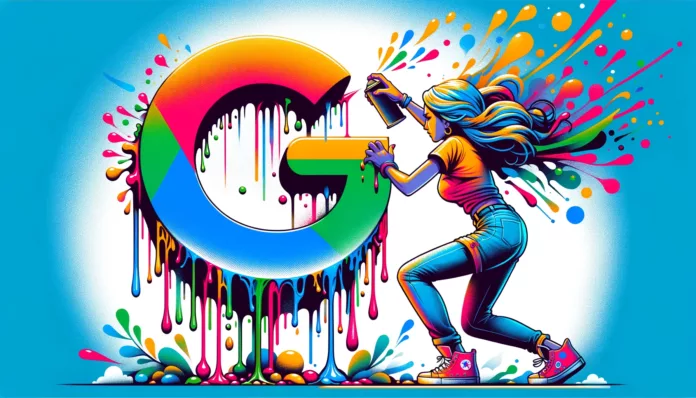In the ever-shifting, often bewildering universe of digital advertising, marketers are forever on the prowl for the latest tricks to mesmerize their audience while preserving their privacy. We’ve talked about this numerous times here.
In recent times, one tactic has risen steadily through the ranks – Contextual Targeting. It’s a peculiar beast, distinct from its shadowy cousin, Behavioral Targeting, in that it doesn’t stalk individual user habits but rather takes root in the contextual soil of web page content. In this expedition, we embark on a deep dive into the realm of Contextual Video Advertising, probing its innards, technological sinews, and the capricious industry currents that shape its destiny.
Contextual Targeting, at its essence, is a personalized targeting dance that doesn’t involve snooping on individual user behavior. Instead, it’s all about strategically placing advertisements based on the content vibe of the web pages users are currently browsing. Imagine a user engrossed in a digital realm of sports gear, suddenly encountering an ad beckoning them to a local gym. That’s the enchantment of contextual targeting – it’s all about ensuring that the ads presented are in perfect harmony with the user’s immediate interests.
At the core of Contextual Targeting are the targeting parameters – these are the predefined categories, keywords, or semantic elements used to decode the context of a web page. These categories, often mirroring the expansive Interactive Advertising Bureau (IAB) categories, span a vast spectrum of topics, from broad themes to the most esoteric niches.
For instance, if you happen to run a website dedicated to a particular car brand, picking categories like “Vehicles” or “Automobiles” would be a wise choice. Advertisers looking to promote their auto repair shop can then set their sights on your website, knowing it aligns with their chosen category. Semantic targeting, a close cousin of contextual targeting, dives even deeper, parsing keywords to grasp the essence of a website’s content, going beyond mere word frequency.
The art lies in meticulously picking the right targeting parameters, a critical junction in the contextual targeting journey. These choices depend on campaign goals, the precision needed in audience targeting, and the nature of the product or service being promoted. Once these parameters are set, the next step is strategically placing ads on web pages that sync seamlessly with the selected context, ensuring that the ad vibes harmoniously with the surrounding content.
The chasm between Contextual Targeting and its counterpart, Behavioral Targeting, is both deep and wide. Behavioral targeting dives headfirst into the murky waters of tracking individual user actions, including their search history, app usage, and buying habits, all to deliver personalized ads. This often entails hoarding user data through cookies, pixels, and assorted data collection tools, a practice that has ignited privacy concerns and fueled the surge in ad-blocker usage.
Contextual Targeting, in stark contrast, operates with a lighter touch, focusing solely on the contextual quilt of the web page being explored, without prying into users’ personal data. This approach gains even more significance in the face of increasingly stringent privacy regulations and the rising popularity of ad-blocking tools.
With digital video advertising traditionally leaning heavily on Behavioral Targeting, the recent tectonic shifts in online tracking have nudged marketers to explore Contextual Targeting as a promising alternative.
The infusion of Contextual Targeting into video advertising adds a new layer of complexity to the landscape. There are two distinctive methods at play when it comes to contextual targeting within video advertisements:
AI-Powered Video Content Analysis: This approach harnesses advanced technologies like speech recognition, Natural Language Processing (NLP), and computer vision to dissect the content within video clips. The AI system meticulously extracts the context of the video and pairs it with the most fitting advertisements.
AI-Driven Web Page Analysis: In this paradigm, AI algorithms engage in an intricate dance with the surrounding content of web pages hosting the video. They identify relevant keywords and topics, turning this contextual goldmine into parameters sent through ad tags to an ad network. This network orchestrates the seamless pairing of the publisher’s video inventory with the most suitable ads.
A compelling case study in the embrace of contextual video advertising comes from none other than Axel Springer, a global news titan. Faced with challenges in monetizing their video content, Axel Springer embarked on a transformative journey, partnering with video technology maestro Connatix. By integrating ad units into video sliders on their digital domains, Axel Springer aimed to breathe new life into their monetization efforts while elevating user experiences to new heights.
One of the most profound virtues of contextual targeting, whether applied to traditional web content or video advertising, is its ability to enhance user experiences by seamlessly aligning content with user interests. Research studies have revealed that ads seamlessly woven into content result in higher memorability among consumers. When users stumble upon ads that organically resonate with their immediate interests, engagement levels soar, bringing blessings to both publishers and advertisers.
Recent advancements in video classification, spearheaded by the IAB Tech Lab, have opened up new avenues for supplementary content in video advertising. This evolutionary step recognizes the importance of additional content and paves the way for a broader embrace of contextual targeting within the realm of video ads.
Publishers are now charting a course toward substantial investments in content creation, guided by insights provided by contextual targeting partners. These partners serve as invaluable conduits, offering astute recommendations on articles, videos, and content packages that seamlessly align with contextual strategies. This shift toward content creation is propelled by the growing prominence of connected TV (CTV), evolving patterns in content consumption, and the meteoric rise of short-form video on social media platforms.
On the advertiser’s front, a symphony of investments in contextual targeting strategies is set to reach a crescendo, with the aim of reaching wider audiences at precisely the right moments. As video advertising continues to ascend the throne of prominence across screens and formats, advertisers now have the tools to deploy contextual targeting not just on web pages but within the very fabric of video content itself. The diversification of contextual methods, spanning page-level and video-level targeting, equips advertisers with the means for granular and surgically precise audience targeting.
In an era where user experience and privacy reign supreme, advertising strategies must adapt to remain competitive. Recent transformations, including updates to IAB Tech Lab guidelines and privacy regulations such as app tracking transparency, have paved the way for contextual targeting to shine as a solution for both publishers and advertisers. By removing the guesswork from ad delivery and ensuring that ads harmonize with content context, contextual targeting creates a superior user experience.
However, it’s essential to recognize that contextual advertising isn’t without its own set of challenges. The industry is in the midst of redefining contextual targeting, with some players incorporating browser and page-level data, device data, IP addresses, and location data into their contextual strategies, often dubbed “contextual 2.0.” This has sparked debates about the nature of contextual targeting and the boundaries that define its realm.
Publishers, armed with an intimate understanding of their content and audience, hold a strategic vantage point. They can craft audience segments with meticulous precision based on contextual cues drawn from their content and user interactions. However, publishers face their own challenges as they grapple with the encroachment of third-party contextual providers and ad tech entities that dive into web content without relying on publishers’ insights. This can divert ads away from valuable content and reporting.
Advertisers, as the conductors of the contextual targeting symphony, also carry significant responsibilities. Often, advertisers resort to basic keyword and category blocking tactics, inadvertently missing opportunities for nuanced targeting. While advertisers excel at optimizing keywords for SEO, their approach to contextual targeting often lacks finesse.
The evolution of contextual targeting is intrinsically linked to the march of AI and machine learning. Leading AI solutions possess the ability for unsupervised learning, empowering them to independently discern patterns in content across diverse languages, categories, and contexts. This empowers advertisers to craft bespoke targeting strategies tailored to their unique objectives, ushering in a new era of personalized precision.
In the grand tapestry of digital advertising, Contextual Targeting emerges as both a guardian of user privacy and a catalyst for engaging, contextually relevant ad experiences. It’s a realm where technology meets storytelling, and where the art of ad placement harmonizes with the science of content context. As the advertising landscape continues to evolve in response to shifting privacy norms and user expectations, Contextual Targeting stands as a resilient and innovative force, poised to shape the future of personalized advertising.























